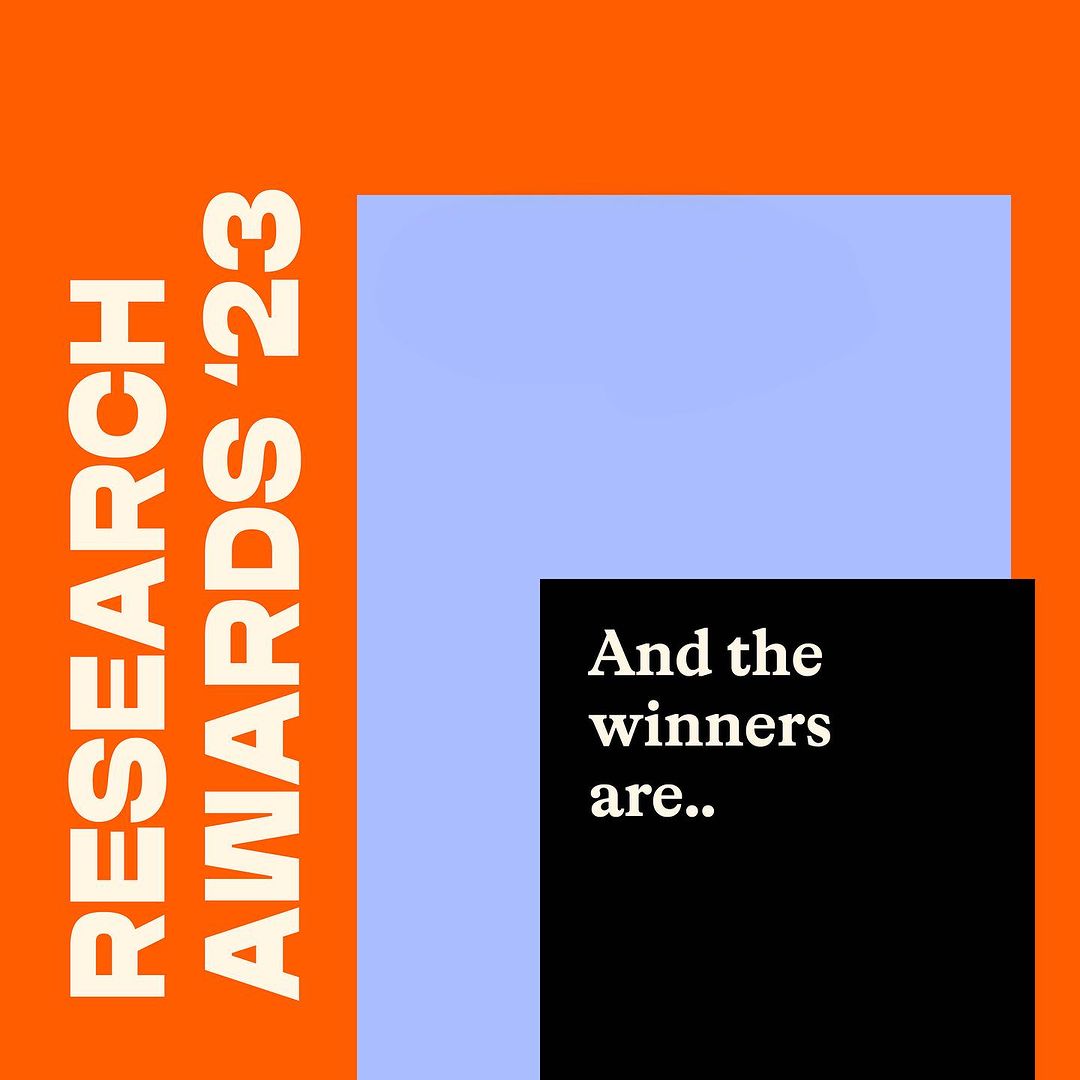Master Interior Architecture Research + Design: Maya Kumari
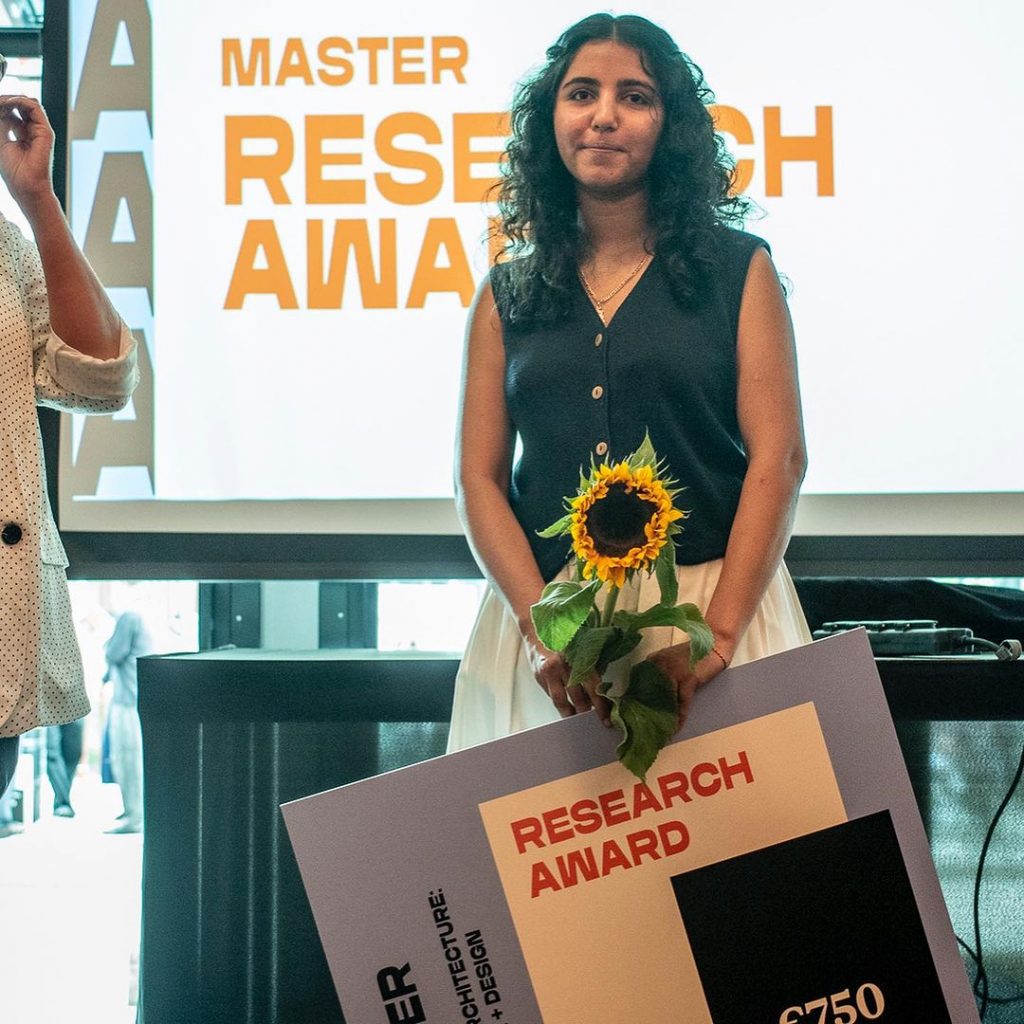
Statement from the artist:
The Thar Desert, situated in northwest India’s Rajasthan, stands as one of the world’s significant hot deserts with a dense population. The geography of the desert villages becomes a site for spatial inquiry, or rather enquiry into what is spatial and how it is experienced in this context.
The project explores how colonial history is encountered, the collective narrative of the people, and the construction of history and place. The project questions the colonial ethnographic gaze and the act of shaping the desert environment. As a native of a desert village and daughter of suthar community utilising a personal narrative alongside archival research to intertwine stories of colonial recording practices such as census records, ethnographic photography, and map-making, all of which played a role in establishing hierarchical structures within the desert villages for land occupation between the 1880s and 1940s. I document family stories, delve into personal archives, and explore ways in which the desert is imagined.
Recording and documentation become a tool to hold friction between ground reality of the desert and the colonial project. Utilising self- recording as a method, I confront my subject position through the use of jewellery as a symbolic tool hoping to merge identity and physical location into one being. It raises questions about who possesses the authority to map the land, who has access to these maps, and whose bodies are necessary for the process of land occupation.
Employing moving images and three screens, the project aims to reveal the multiple layers that exist beyond the tangible. Through moving image acts, I turn my gaze inward, questioning my own capacity to envision the arid landscape. It becomes crucial to challenge and stabilize the subject positions because within this region, our subjectivities define our political power, spatial power and access to resources. This project offers a glimpse into the interrelationships, people, economies, names, and places that coexist within the desert space.
Work can be seen Gallery 3 of HNI
Congratualations to Maya Kumari this years recipient of the Research Award of Master Interior Architecture Research + Design
Master Education in Arts: Elina Charinti
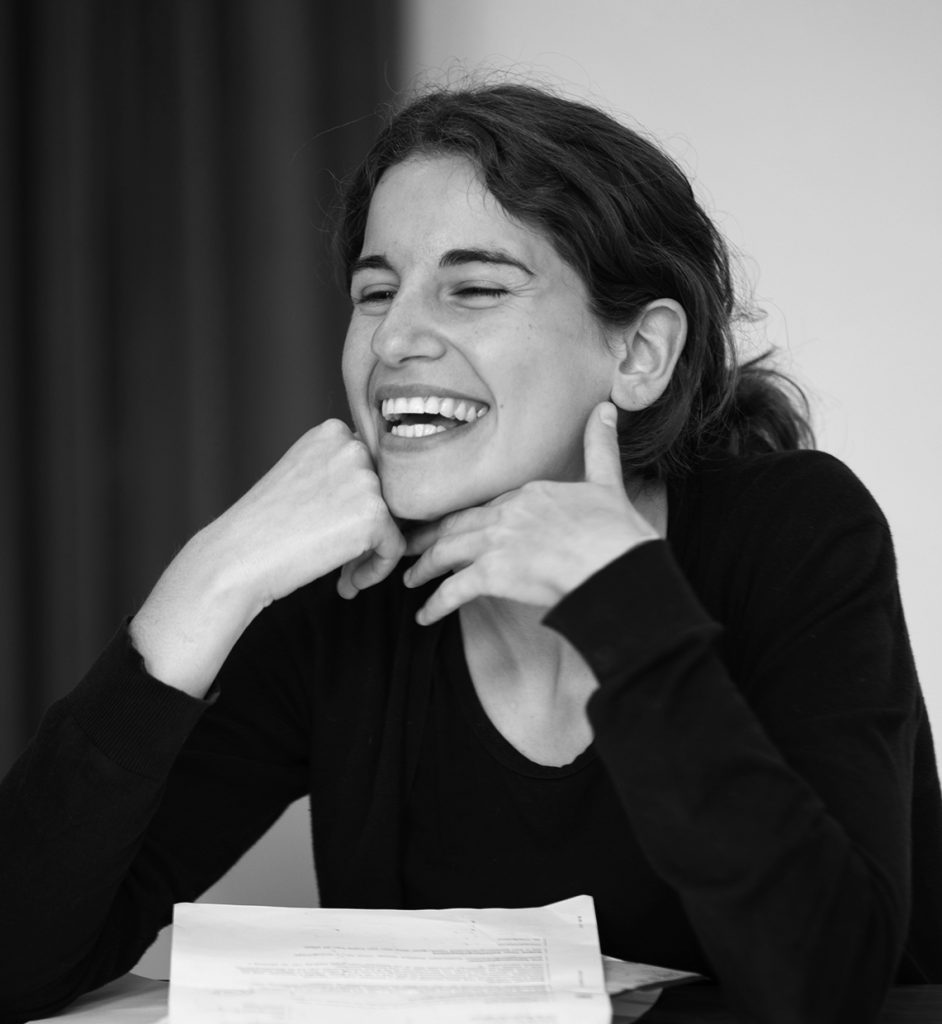
In her graduation project Holding Moments. Understanding and engaging affective pedagogies with emergent multilingual children, Elina Charinti convincingly combines affect theory, research-creation, and action research in order to create an open-ended back and forth between theory and practice, between observing and responding, between sessions/workshops and reflection, and between facilitating and researching. This research manages to practice and convey the so-called ‘emergent’ character of research events, refusing the linear logic that marks most research. The drawings that accompany the research events function both as documentation and reflection – as they involve various choices in terms of what matters (moments of attention, non-verbal economies, shifting relations). The drawings chime with the chosen methodological framework as they are marked by contingency, openness and responsiveness (like the research event being described). Elina Charinti exhibits a keen understanding of relevant pedagogical theories and concepts (such as love, play, affect etc.) as well as the ability to experimentally apply them in the sessions/workshops. She shows the ability to critically reflect on the research methods and the context in which they are mobilized and while doing so, never loses sight of her own positionality (her own locations and privileges) and how this informs the interaction with the children of the asylum seeker’s center. All this is done with scholarly rigor and ethical sensitivity.
Congratulations to Elina Carinti, recipient of the 2023 Master Education in Arts Research Award
Master Lens-Based Media: Aitan Ebrahimoff
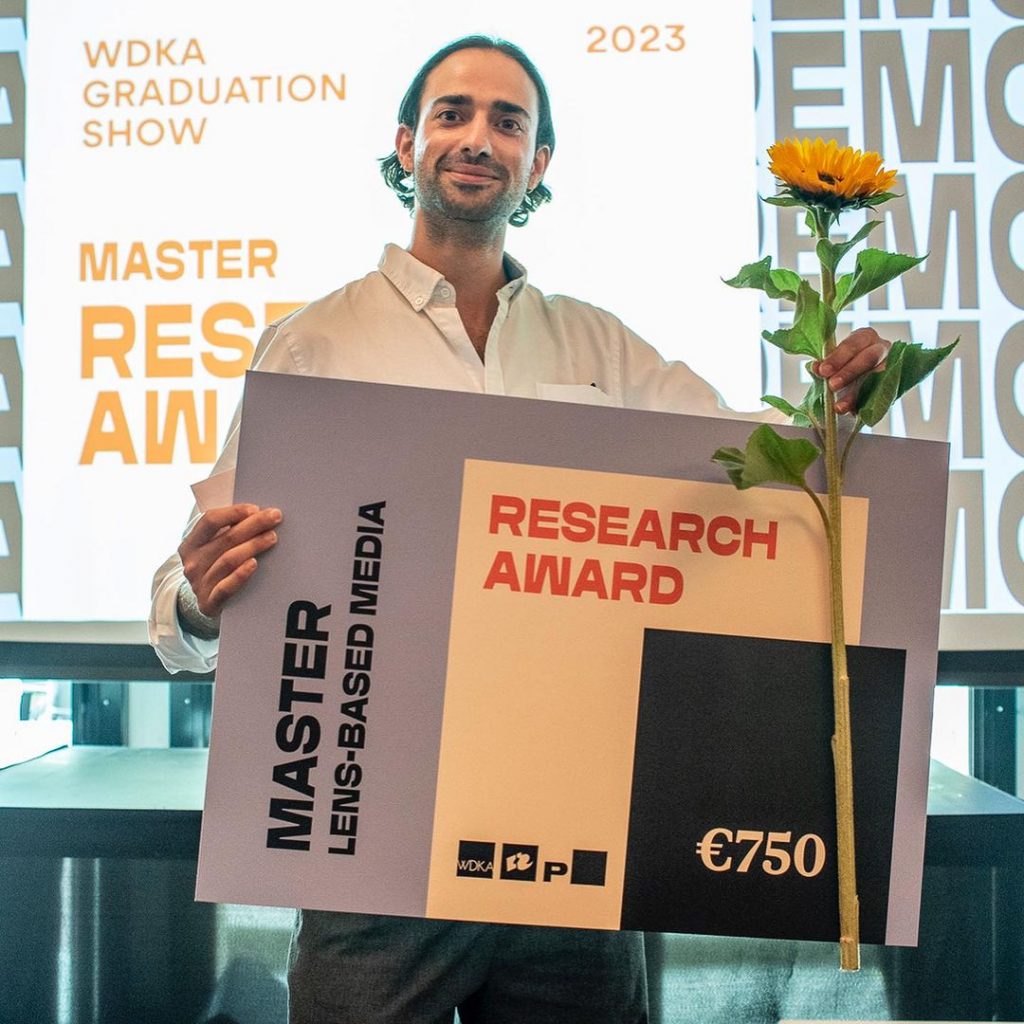
Aitan Ebrahimoff (1991) is an artist filmmaker based in Amsterdam. His short films combine speculation, documentary and science fiction. With a media design practice he blurs the line between video art and cinema, building hybrid realities with human and non-human actors.
Research and writing are important tools in his process, whereby scripts are used to structure associative narrative elements. Whether factual or fantasy, his films blend genres and incorporate cultural observations which are rooted in reality.
Aitan Ebrahimoff’s documentary Parasite by Proxy explores the Crypto Jews of Mashhad. In the early 20th century these Persian Jews were forced to convert to Islam but practiced Judaism in secret. Marginalised in Persia, some migrated to Palestine. Eventually they had a majority status as Jews – the guest became the host. Aitan contemplates this inherited history and the relationship between guests, hosts and parasites.
Congratulations to Aitan Ebrahimoff, recipient of the 2023 Master Lens-Based Media Research Award
https://aitantv.xyz/
https://www.instagram.com/aitan.tv
https://we.tl/t-Iyk71C9CTh
Master Design: Anne Karin ten Bosch
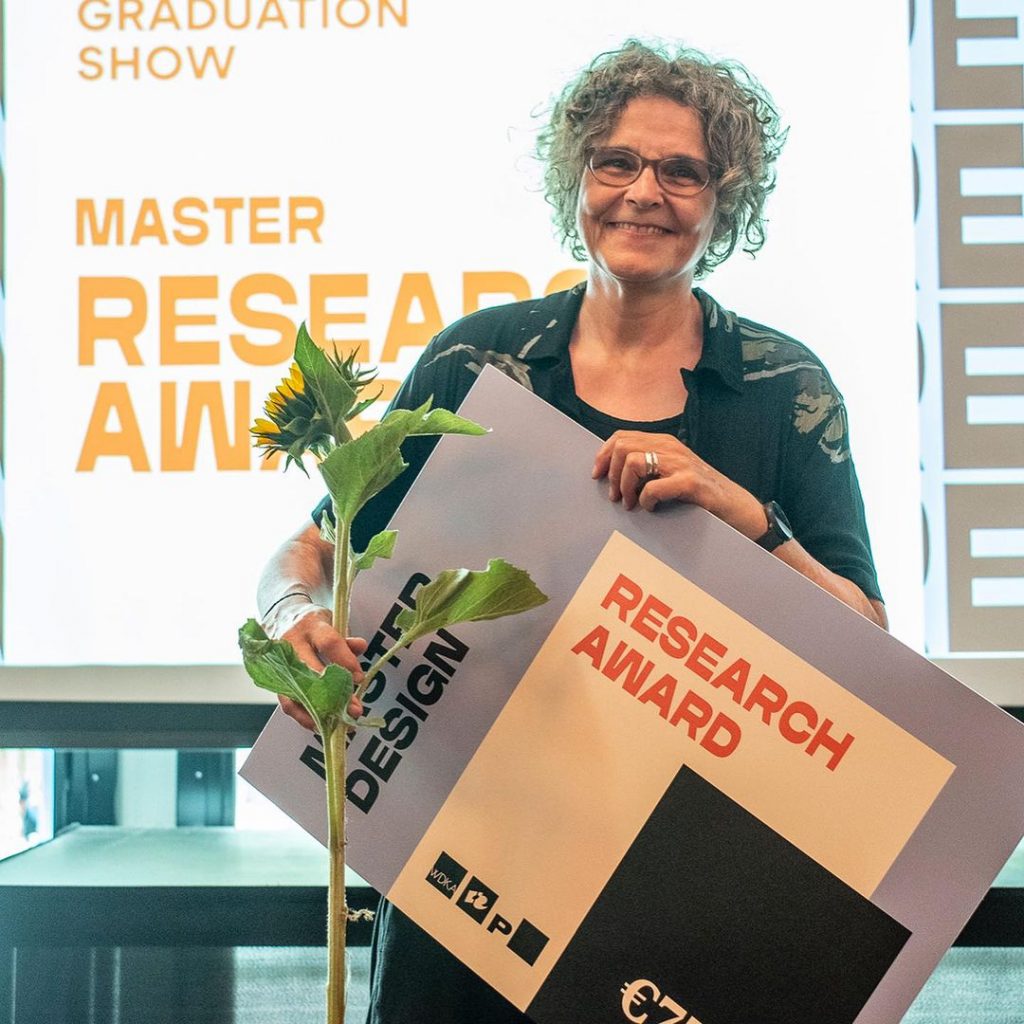
City scenographer Anne Karin ten Bosch found a way to make the broad values of urban nature in Rotterdam-Northwest visible by connecting them in the fictitious Stadspark West – of which she is the initiator.
She acted very well in a complex network of stakeholders – citizens, gardeners, architects, politicians, nature – choosing the strategy of not-not-designing. Planting seeds of thought is a choice that suits her gentle way of designing and tactical way of operating. At the same time, she does not shy away from provocation – she helps others to look in a fresh way precisely by not immediately thinking in terms of solutions but rather by a commitment to thinking.
She provided directions in this process, at the same time recognizing her own role as a facilitator and connector.
Her approach has been honest and authentic in the whole of Stadpark West, she knows where her own strengths lie and also what is needed to make things happen: namely listening to the other, which she does on all levels, not only towards all the participant groups in the area, but also in her theoretical reflection. Listening also means always entering into conversation, and giving space to what the other contributes or does. In this way she delivers a fresh inputs to issues that are relevant to the urban environment.
Her Stadspark West does not end here, but makes a next step now, and we look forward to following it in the future.
Congratulations to Anne Karin ten Bosch, the recipient of the 2023 Master Design Research Award
Master Experimental Publishing: Erica Gargaglione and Ål Nik [Alexandra Nikolova]
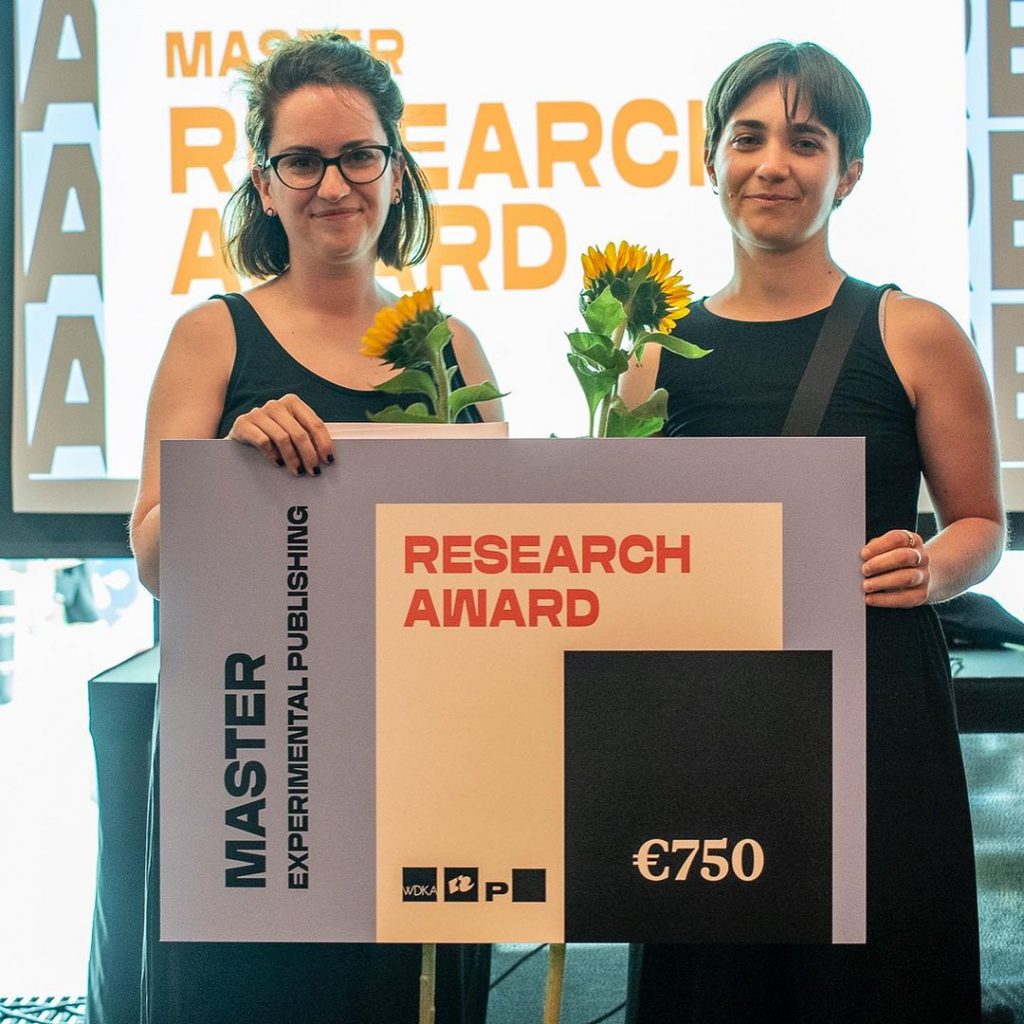
In both their respective graduations projects, Alex and Erica focussed on collective work.
Alexandra Nikolova (Ål Nik)’s Sound Jams (Deluxe Edition), is a collection of five collectively made sonic publications, with audio recording and visual elaboration. Nikolova designed the Sound Jams format as a way to “inspir[e] practitioners to play with different methods for including sound in their research and artistic practice”, in particular targetting an audience that may not have musical training or other familiarity with audio.
Erica Gargaglione’s Hacking Maintenance with Care is a research about the everyday struggles experienced within the practice of collectively running and maintaining independent digital infrastructures in the cultural field. A series of conversations and collective evaluations called “Boiler inspections” has being conducted. Spreadsheets, questionnaires, forms and other bureaucratic amenities are used as props to trigger boiling questions conversations.
Together they formulated XPUB3; with this project, the graduating master students from XPUB (2021-2023) started exploring ways to continue working collectively, expand the new skills and practices they embraced during their studies, and discover opportunities for artists (collectives) in the Netherlands (and Europe). During the second year of XPUB, Erica and Alex facilitated a few sessions to harvest ideas from the group and see who would like to be involved in the future – and how much. The research started with collecting information about funding opportunities and continued with sessions with students. During those sessions, they started exploring the personal and collective needs of each, what skills and experience they are willing to share with the others, and what types of roles they feel comfortable undertaking in a collective process. The next steps include drafting a plan on the next sessions to take place in the Autumn and prepare the first applications together.
With this award we are happy to support their efforts.
Congratulations Erica and Alex, this year’s recipients of the 2023 Master Experimental Publishing Research Award.
Master Fine Art : Gabi Dao
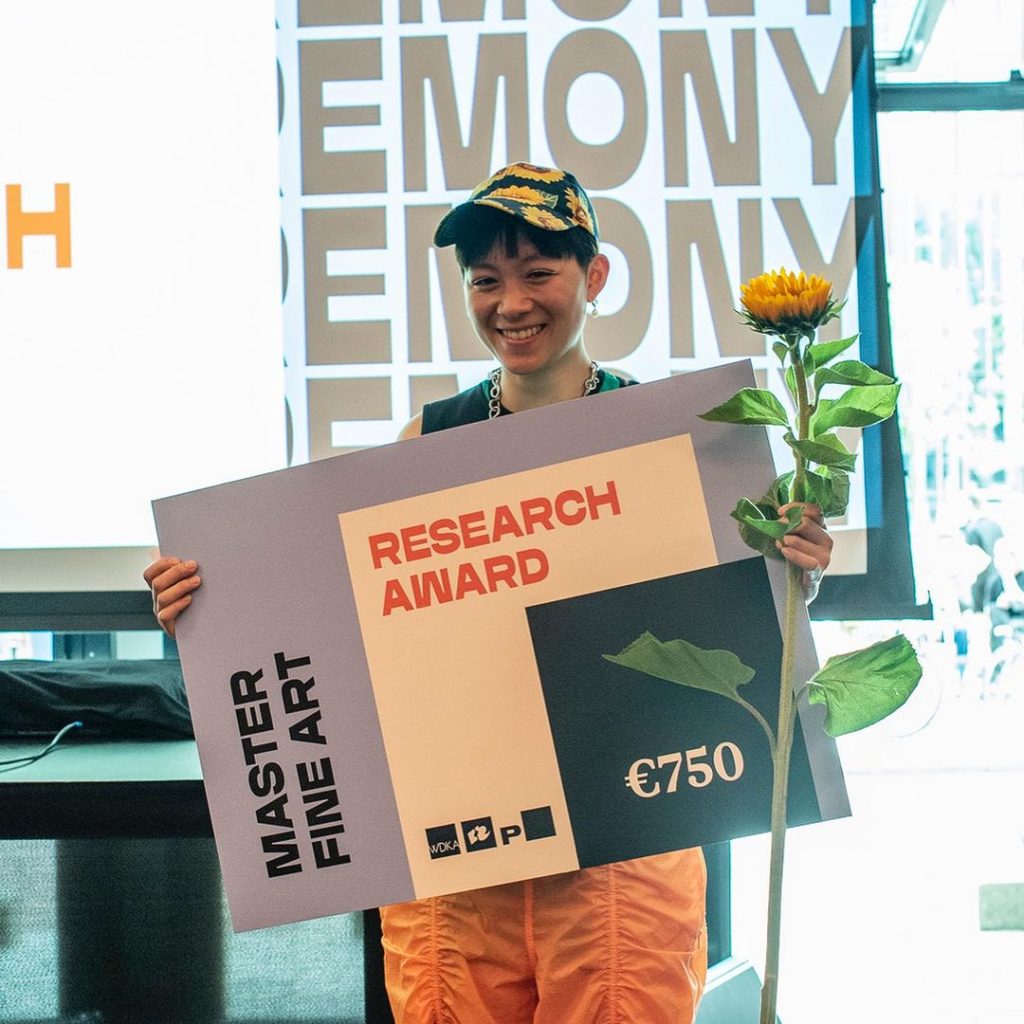
Gabi Dao’s graduation project presents a series of slip-cast ceramic and textile marionettes that are born out of the experimental eco-horror film Lucifer falls from Heaven at Dawn. The film conjures a worldmaking where bats are the main protagonists— in particular, a bat named Lucifer.
Lucifer is an anti-hero figure who nods to the eponymous fallen angel, the Dawn star child of Venus who in Christian theology was cast from Heaven for rebellious behaviour.
Cheeky, jittery, determined and tender, Lucifer falls to earth and lands at the foot of an overly mined, collapsed limestone mountain— in a shattered landscape haunted by the sillage of settler colonialism, agro-industry and resource extraction. As Lucifer comes to their senses, they set off on a journey in search of The Others, other bat species. Along the way, Lucifer encounters a group of bat biologists with a similar quest.
As the biologists go about their work of tracking and logging data on this sonically inclined, ecologically imperative yet culturally scorned species, Lucifer witnesses the audio/visual technologies that cross realms between science, cinema and surveillance. Amongst dry lightning storms, forest fires and other fated encounters, they oscillate between the micro and macro realities of human and more-than-human worlds. In the rhythms of this spatial-temporal hopscotch, Lucifer navigates the ineffable tensions between ecology and economy, protection and saviorism, alienation and belonging, dissidence and complicity, disassociation and sentimentality.
Congratulations to Gabi Dao, the recipent of the 2023 Master Fine Arts Research Award.

